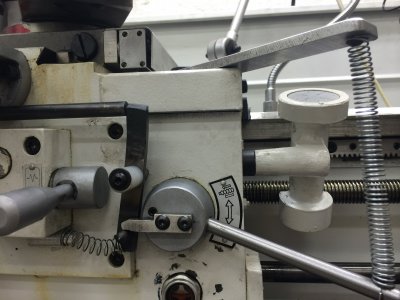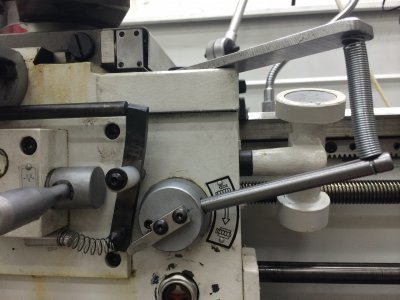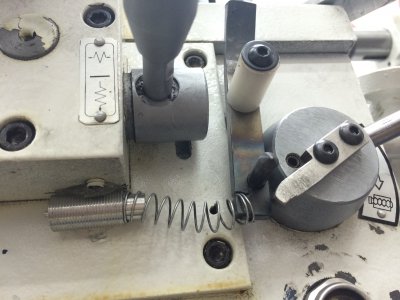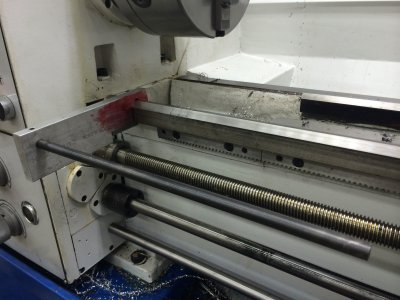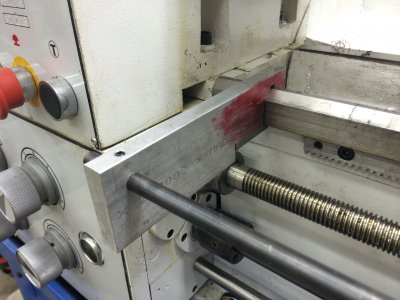- Joined
- Feb 4, 2014
- Messages
- 185
Hello Gentlemen!
I've got a project coming up soon that is going to require a few hundred internal threads done that are fairly long. I'm not the biggest fan of rushing to disengage the halfnut milliseconds before it goes crashing into a shoulder at high speeds. And this is even worse with internal threads as and lathe owner knows. So here is my solution! A simple automated carriage stop.
[video=youtube;-Riiep0c64o]https://www.youtube.com/watch?v=-Riiep0c64o[/video]
If there is any interest I can post a full write up on the "build". It's essentially just a simply trigger, Luckily I know my guns! )
)
Anywho...Enjoy!
I've got a project coming up soon that is going to require a few hundred internal threads done that are fairly long. I'm not the biggest fan of rushing to disengage the halfnut milliseconds before it goes crashing into a shoulder at high speeds. And this is even worse with internal threads as and lathe owner knows. So here is my solution! A simple automated carriage stop.
[video=youtube;-Riiep0c64o]https://www.youtube.com/watch?v=-Riiep0c64o[/video]
If there is any interest I can post a full write up on the "build". It's essentially just a simply trigger, Luckily I know my guns!
Anywho...Enjoy!

